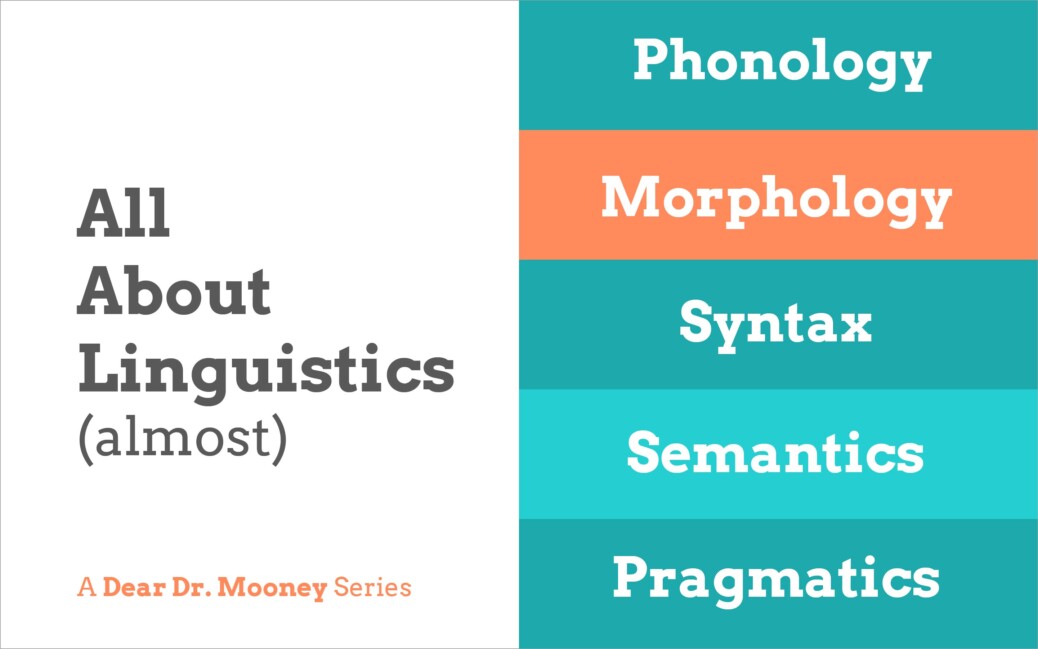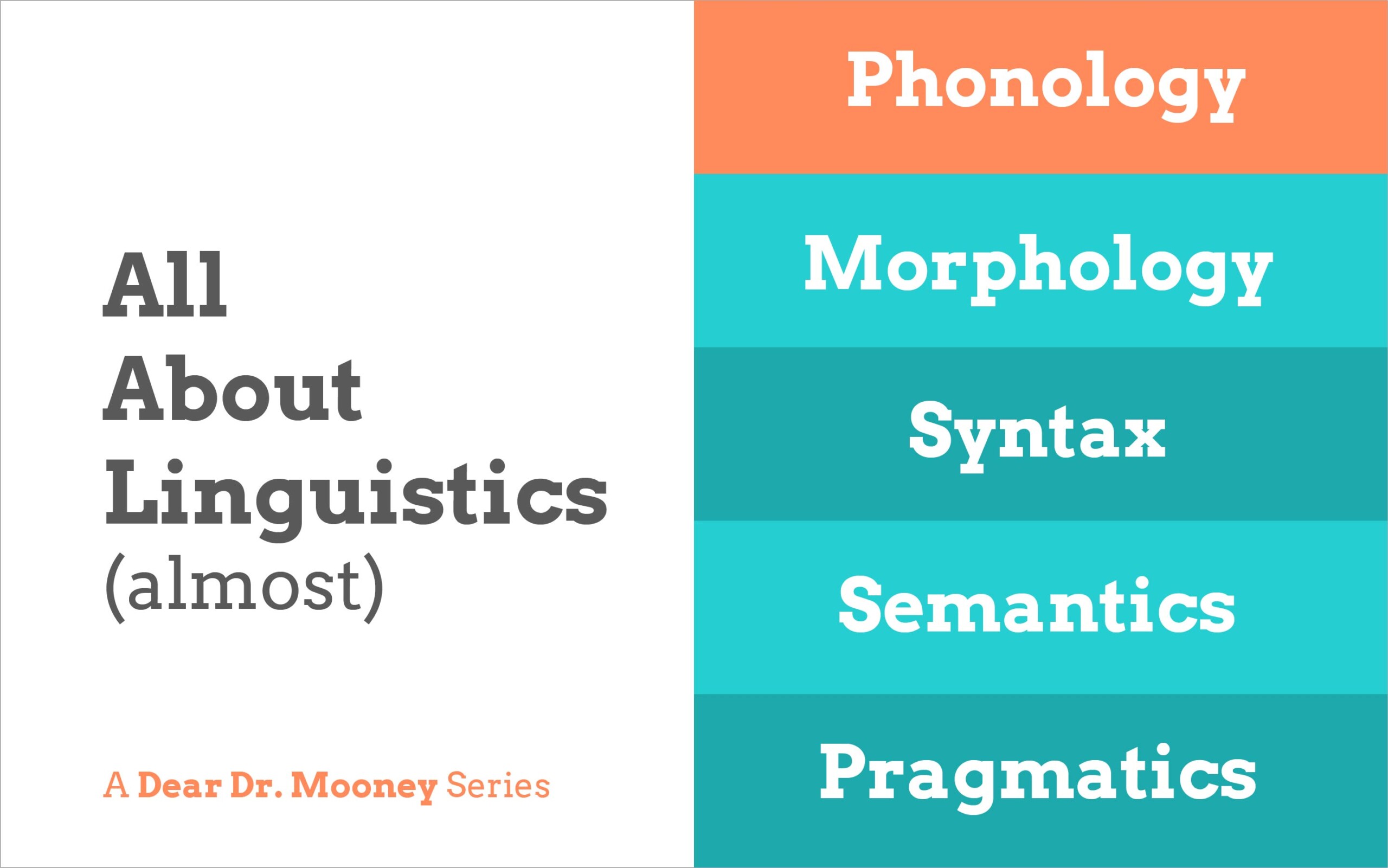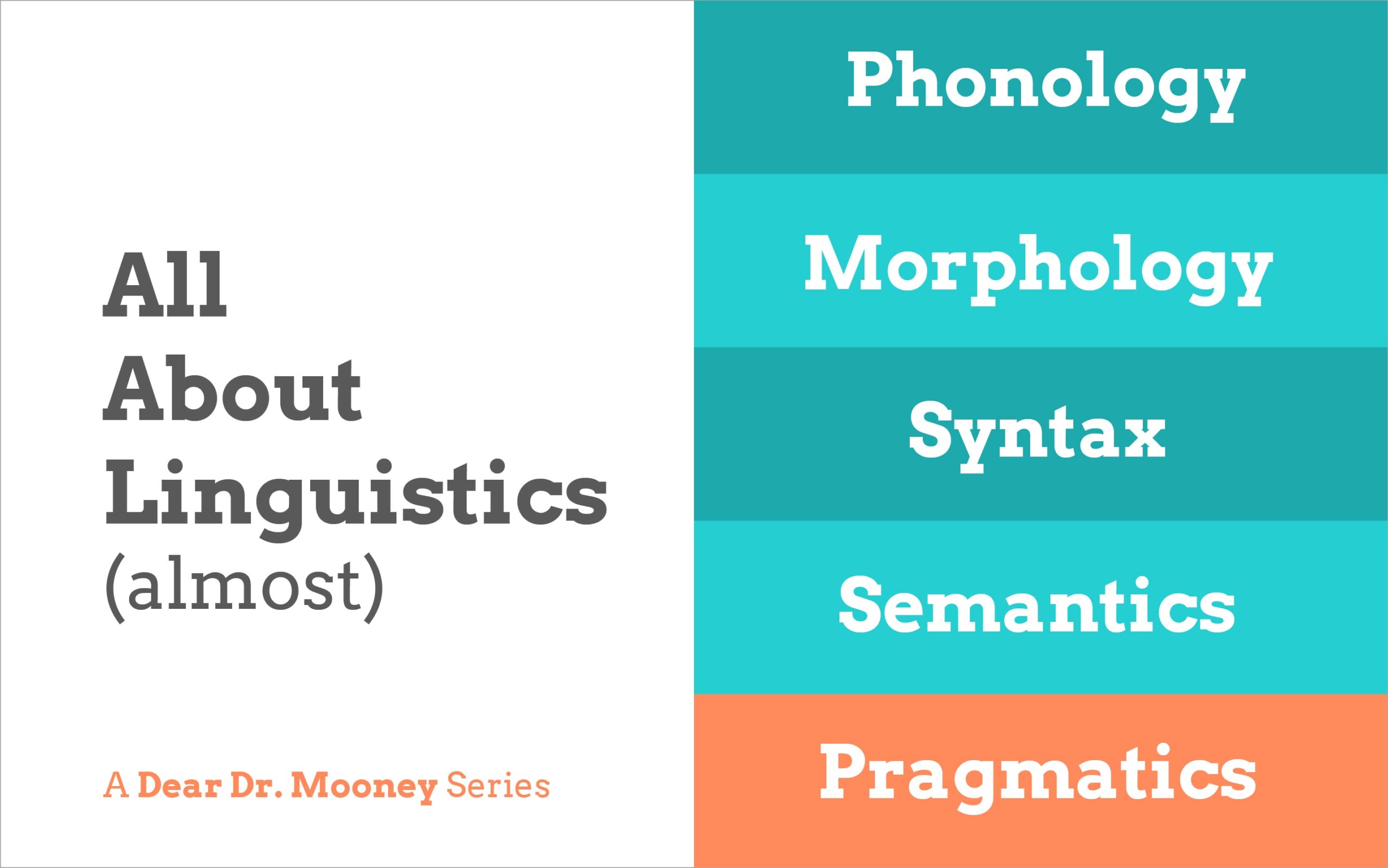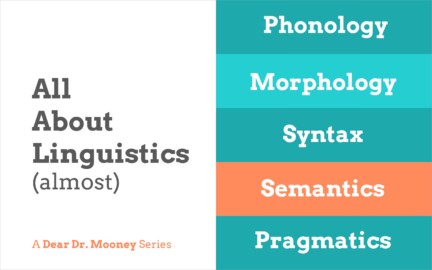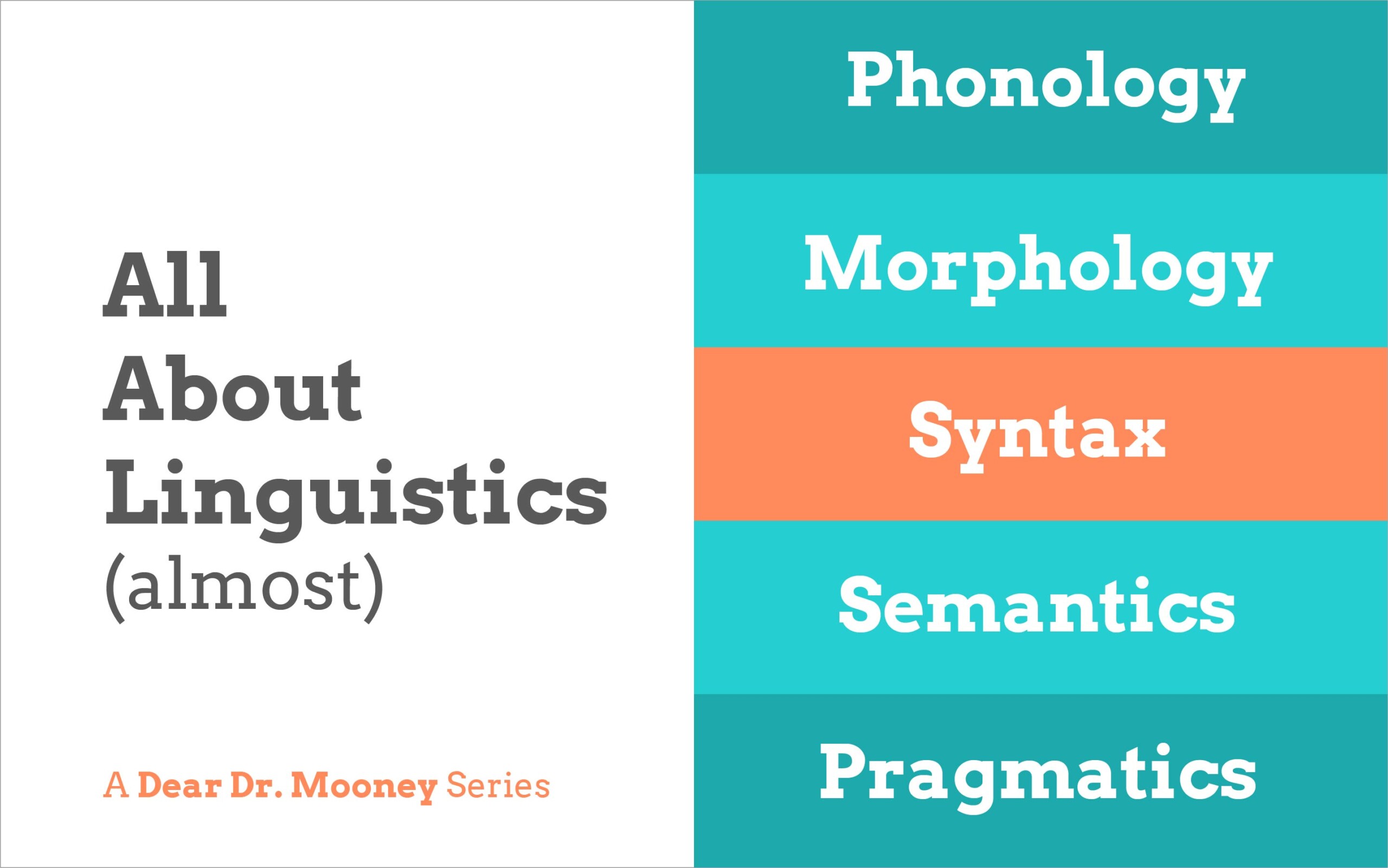This month, we’re highlighting key aspects of the five areas of linguistics and why they are important to your teaching. We have already discussed phonology and a couple of reasons why hearing or producing the sounds of English may be difficult for your learners. Now it’s time to consider how those sounds work together to form words.
Morphology
What is it?
Morphology is the study of how words are created in a language. Just as phonology has phonemes, which represent the smallest meaningful sounds in a language, morphology has morphemes. These are the smallest meaningful parts of language.
Word Parts
We have two types of morphemes in English – free and bound.
Free morphemes are those units that can stand alone. For example: tree, book, run, and student. If I were to remove one of the letters from any of these words, the meaning would no longer be the same. But, I also don’t need to add anything in order for you to understand the meaning they carry.
Bound morphemes need to be attached, or bound, to a free morpheme in order to have meaning. In English, these are all prefixes or suffixes, collectively referred to as affixes. For example, in the word “trees”, the “tree” is a free morpheme and the “s” is a bound morpheme. The “s” signifies the plural in this case, but it doesn’t mean anything by itself. If I just wrote “s” in my essay, you wouldn’t know if I was talking about several trees, students, or books. The “s” must be attached before it carries meaning. This is true of all prefixes (reread, untie, worker, quickly)
Did you know some languages have infixes? That’s right! The additional morpheme is added into the middle of the free morpheme instead of at the beginning or the end. We actually have a form of these in informal speech in English, too.
Have you ever said, “Abso-freakin-lutely! The infix (freakin’) goes right before the stressed syllable. It wouldn’t sound right anywhere else!
Word Types
You are teaching morphology whenever you talk to your students about types of words. We have four in English – simple, complex, compound, and compound-complex.
- Simple words contain one free morpheme.
- tree, chair, student, tie
- Complex words contain one free morpheme AND one or more bound morphemes.
- trees, chairs, untie, reestablishment
- Compound words contain two free morphemes.
- teacup, houseboat
- Compound-Complex words contain two free morphemes and one or more bound morphemes.
- Bookkeepers (book + keep + er + s), unforeseeable (un + fore + see + able)
Why does it matter in my classroom?
Often, when teachers are encouraging learners with their decoding skills, they suggest the strategy of “looking for little words inside big words”. They are attempting to help students see that longer words can be subdivided in order to determine their meaning.
This can work easily with many compound words, such as “houseboat” It is a combination of “house” and “boat” and essentially means a house floating on the water. However, this strategy isn’t always successful. A student may see “hot” at the beginning of “hotel” or “quit” in the middle of “mosquito”. Neither are word parts that contribute to the meaning of the whole word.
Teachers of older students may include the study of Latin & Greek roots. They may show students how knowing the root “mis” means “send” allows them to infer the meanings of transmit, submit, commission, permission, and many other words. Many academic English words include Latin or Greek roots, so this can be a helpful use of class time. However, teachers must be aware of the difficulties these roots can cause.
For example, many have alternative spellings or pronunciations that can make them difficult to recognize. “Mis” is also spelled as “mit” in transmit and submit above. In others, the root or the prefix/suffix change their pronunciation based upon how they are paired. The prefix “con” is spelled “co” when the root word begins with a vowel (coauthor, coexist), but it’s spelled “com” when the root begins with a bilabial sound (combine). A bilabial is a sound made with both lips, like /b/ or /p/.
So, while teaching roots and prefixes and suffixes can be helpful, teachers must be mindful that they have many exceptions that can be confusing to native and non-native English speakers alike!
Two Suggestions for Implementation
Teach a Few Roots
As long as you are aware of the need to be cautious, I would recommend teaching the most common English prefixes and suffixes and Latin/Greek roots. Older or more advanced English learners can benefit from purposeful study of this kind because it will help them more quickly learn the academic language required in their content classes. Subject area teachers are well aware of the most common prefixes/suffixes/roots used in their disciplines. If you’re a content teacher, make a point to specifically teach these word parts as they occur in your lessons. If you’re an EL specialist, help the content teachers in your building recognize the importance of including mini-language lessons within their content lessons. You don’t have time to teach everything your ELs need to know, and the content teachers can help in this way!
Here are a couple of lists to get you started:
Root Words, Roots, and Affixes
https://www.readingrockets.org/article/root-words-roots-and-affixes
List of Latin & Greek Roots in English
https://www.oakton.edu/user/3/gherrera/Greek%20and%20Latin%20Roots%20in%20English/greek_and_latin_roots.pdf
Word Investigations
Whether you are a content teacher or an EL specialist, you can design word investigations for your students. We all know that we typically remember information better when we discover it for ourselves rather than having someone lecture us about it. So, when students have questions about word meanings, and you can see that a prefix/suffix/root is present, take the opportunity to ask students to offer guesses about the meaning. Question them about why they think that way. Encourage them to find other words with the same pattern and see if they can use their detective skills to figure out the connection. Most students will enjoy the chance to be a Word Detective!
You can also share books such as those by Ruth Heller with your students. They are beautifully illustrated books with lyrical text that exposes students to morphology. Some of my favorites include…
Many Luscious Lollipops: A Book About Adjectives
Amazon
Kites Sail High: A Book About Verbs
Amazon
A Cache of Jewels and Other Collective Nouns
Amazon
Research shows that the explicit teaching of the parts of speech does little to improve students’ reading and writing. However, repeated exposure to books like these will allow them to acquire an understanding of how English works to create words.
Next week:
How do we put all of those words together to create phrases, clauses, and sentences? Oh my!

